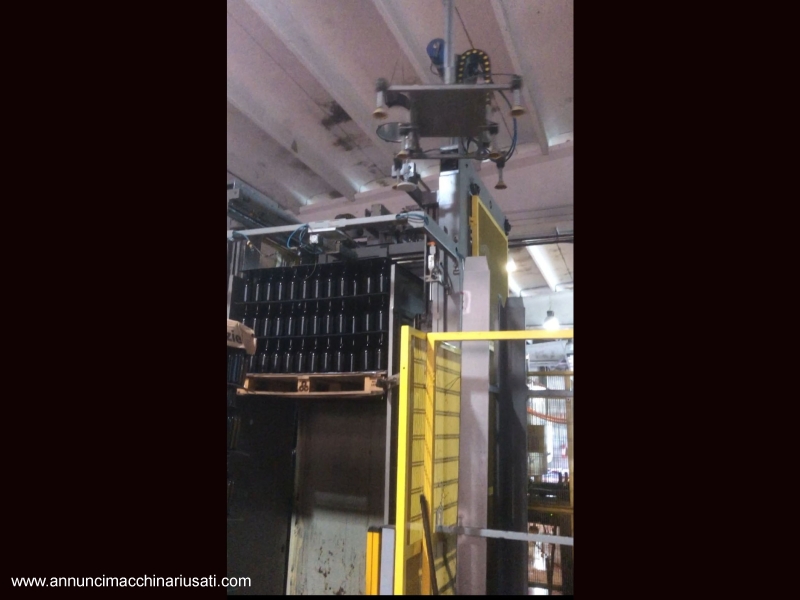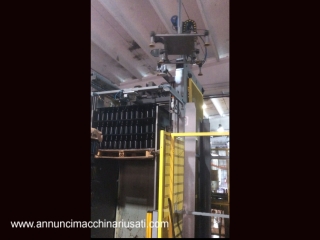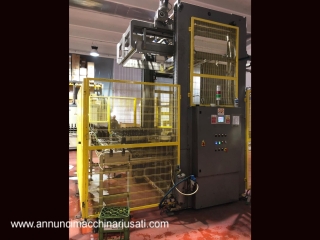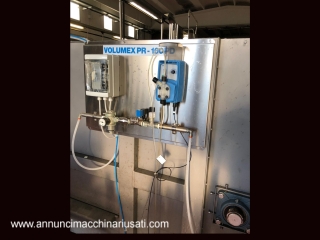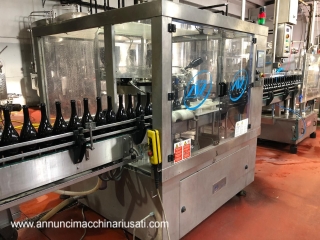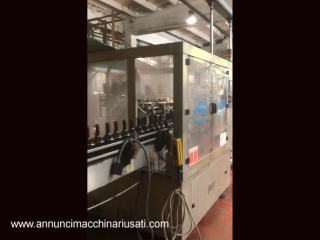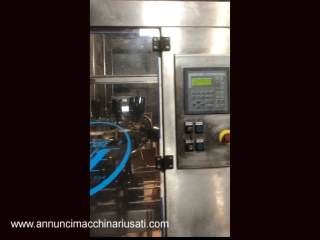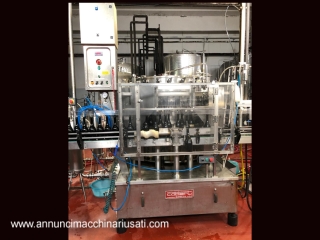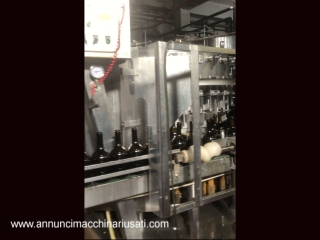Description
The isobaric filling line for sparkling and sparkling wine produces 3000 bottles per hour and manages 1.5 liter bottles together with a wide range of formats. The line works without hitches and it is possible to inspect it before its divestment at the end of April. Each line of the line includes safety devices and some technical manuals remain available. The bottle formats include Collio, atmosphere, Astro, Lia, Cuvée, Spumante Italia, Flute, Campana, ExtraL, Rasse cap, Emilian, Bordeaux, Borgognotta, Nobile Bordeaux, Borgognotta Alta. In addition, the seller will provide exchange parts formed together with the line. In addition, the transporters transporters guarantee continuous movement and without interruptions between the machines, optimizing the production process. Description of the main machines of the TMG VEGA 60 (2008) depallette in this filling line used for sparkling wine, the depalletizer automatically removes the bottles from the pallets using the integrated PLC and electronic protection barriers. In addition, its system includes a warehouse warehouse and an automatic mechanism for the removal of slopes and caps within the same cycle, ensuring efficiency. Risquinator Ave Rai 12 (1999) The rinse cleans the inside of the bottles using its PLC system. It effectively removes particles and potential contaminants. Consequently, the bottles are adequately prepared for filling, which contributes to greater quality of the product. Ozone dispenser The Ozone dispenser sanitizes the bottles before filling by producing ozone gases, a strong oxidizing agent. The gas not only eliminates bacteria, yeasts and microorganisms, but leaves no chemical residues, thus guaranteeing high hygienic standards. Isobaric Cobert Supreme (1985) filling the isobaric filler fills the bottles using 24 filling valves by checking the internal pressure. Consequently, both the still and the sparkling wines works, preserving their stability and quality. Scalp with Arol (1997) The monothest step applies wire caps and mushrooms. As a result, it guarantees a hermetic closure, which preserves the flavors and properties of wine over time. Passoer Kompass (2007) The breach applies precisely the screw caps (BVS, Stelvin) to the bottles. In addition, its design adapts to multiple formats and guarantees safe closures for different types of wines. Robino & Galandrino Rekord 10/2 (1994) Gabbiette automatically applies metal cages using its 10 plates and long -lasting charger. Since the car loads the cages from the ground, it allows uninterrupted and without delays. Heating tunnel of Comtec bottles (2017) The heating tunnel stabilizes the temperature of the bottles after filling by spraying them with warm water. As a result, it helps to reduce thermal shocks and prevents potential damage to the bottles. Tun1 (2001) drying tunnel the drying tunnel blows high efficiency air on the bottles, drying them carefully before they pass to the next production phase. Therefore, this step guarantees that the bottles are ready for labeling and packaging. Distribution and application of the capsuctor of the Nortan capsules distributor (1997) The distributor continuously feeds the capsules to the capsulator, thus reducing the time of car stops to a minimum and ensuring a constant production rhythm. Capsulator Nortan Unicap 35TS (1997) The capsulator applies and narrows the PVC capsules using her thermal head. In addition, it works efficiently on various bottles formats, thus guaranteeing precise and uniform results. Labeline PE Universal/Master/S (2000) The labeling machine applies adhesive labels with precision using its 4 operating stations managed by a PLC system. In addition, it manages without problems different bottles formats, guaranteeing a coherent positioning of the labels. TMG Combi 15 N-DA (2008) monobloc package in this filling line used for sparkling wine The monobloc performs multiple tasks, including: automatic format of cartoon cartons from the long-lasting warehouse packing of cartoon bottles automatic insertion of the partitions sealing the cartons at the top and at the bottom with adhesive tape, the system manages in an efficient way containing 6 or 12 bottles. In addition, it guarantees safe packaging to protect the bottles during transport. Weight control station in this filling line used for sparkling wine the weight control station measures the weight of each cardboard with high sensitivity. If it detects insufficient weight, automatically interrupt the process and warns the packing monobloc. As a result, this prevents the defective packaging continues through the production line. IMA automatic ball ball (2005) The automatic dribbler stacked the cartoons efficiently using its layered sloping system. In addition, its design guarantees continuous functioning with a minimum human intervention, thus reducing manpower requirements. This isobaric filling line used for sparkling wine 3000 BPH provides a complete solution for bottling of sparkling and sparkling wines. Integrated transporters transport the bottles without problems between the machines, ensuring efficient production with minimum delays or hills. Therefore, the line supports high productivity while maintaining the quality of the product during the entire process. Conclusion of the isobaric filling line used for sparkling wine 3000 BPH This isobaric filling line used for sparkling wine 3000 BPH offers a completely integrated and efficient bottling solution, ideal for cellars looking for high performance equipment with minimal detention times. The precise filling combination, reliable stopping, uniform labeling and automated packaging guarantees an optimal production flow by preserving the quality of the product. Thanks to cutting -edge machinery, including the Depalletter, the Ozone supplyer, the rinse and the capsulating system, the line guarantees a hygienic and safe bottling. In addition, the transporters included include manual movement minimize, reducing operating bottlenecks and maximizing productivity. Thanks to its complete configuration and the flexibility of the format, this line is ready to easily support the continuous production of wine on a large scale.


